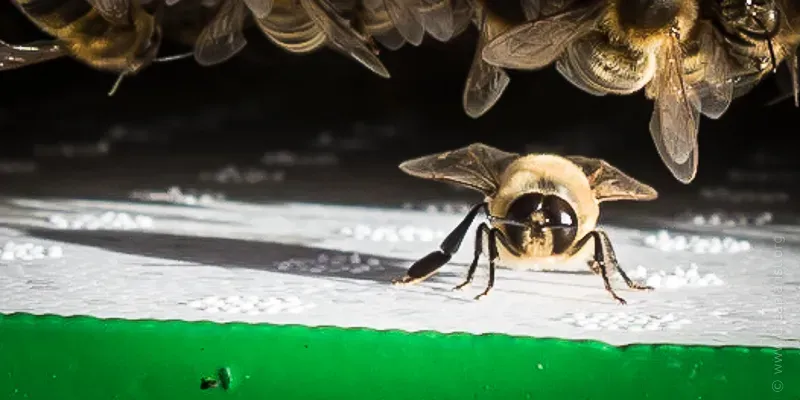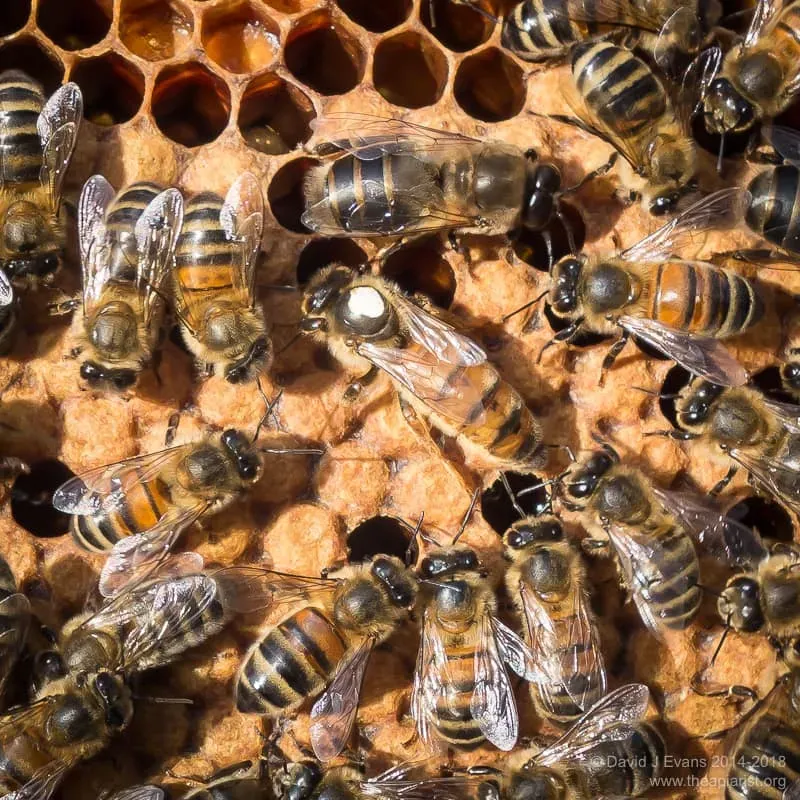Scent of a man

Al Pacino has received five nominations in the Academy Awards 'Best Actor' category. Although arguably not his best film, his only win - at least, so far - was for his role as Lt. Col. Frank Slade in the 1992 film, Scent of a woman {{1}}.
Slade plays a decorated, blind, alcoholic and suicidal, retired Vietnam veteran. It might not sound appealing, but it is a good film and contains several well-known scenes. In one, he notices the perfume of a woman in a restaurant - hence the title - and offers to teach her to tango.
Being blind, Frank is even more dependent upon his other senses to detect changes in his environment.
Honey bees, which spend the majority of their lives in the dark confines of the colony are - at least in some ways - similar, though they are not blind {{2}}. Although they can visually discriminate between colours and patterns, they cannot distinguish between bees from different colonies by sight. Instead, they rely upon the 'smell' of the cuticular hydrocarbons (CHC) that are characteristic and, at times, unique.
Cuticular hydrocarbons
I've written about CHC's and workers before. It's an interesting topic; CHC's are impacted by the microbial population of the gut, and - in turn - influence both the ability of young flying bees to drift between hives, and the recognition of non-nest mates by guard bees. {{3}}.
None of which tells you what CHC's actually are.
This is how I described them in a previous post:
CHC’s are long-chain hydrocarbons (predominantly alkanes, alkenes, and branched alkanes) made in [special cells and] transported to the outer cuticle of the insect where they form a water-repellent layer that helps prevent desiccation.
CHC’s are also pheromones and the ratios of the various hydrocarbons in the mix differ between colonies, providing a unique ‘fingerprint’ that allows guard bees to discriminate between nest mates and non-nest mates.
The names (alkanes, alkenes etc.) don't matter ... just think of them as subtly different chemicals, which - where needed - I'll distinguish between using a number. For example, C23 and C24 are both CHC's, but differ in the number of carbon (C) atoms in the chain (one has 23 and the other - spoiler alert - has 24).

Workers are, of course, female ... but the title of this post is 'Scent of a man'.
That's because today I'm going to write about drone CHC's, specifically with reference to some drone behaviour we'll see a lot of in the next few weeks, and some drone behaviour we've (or at least I've) seen too little of over the summer.